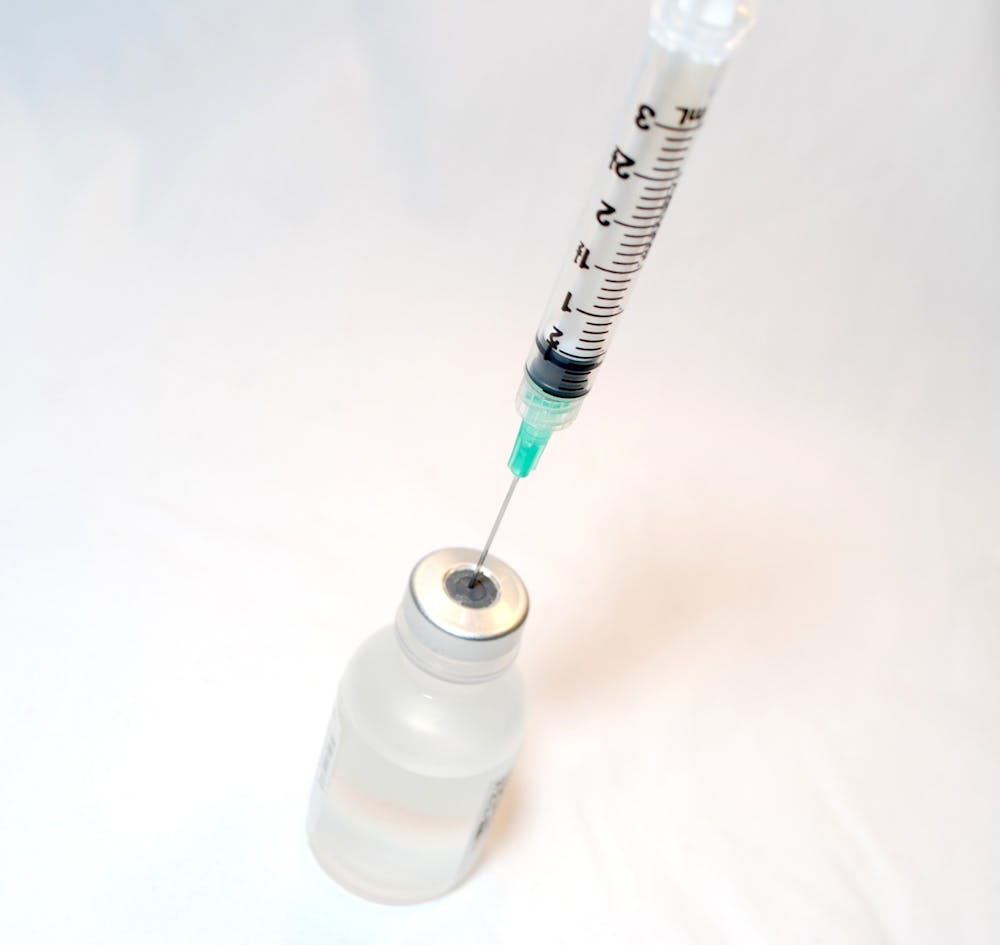Since the start of the COVID-19 outbreak, scientists in both the public and private sectors have been testing various experimental vaccines to curtail long-term damage of the virus.
Hopkins researchers Tzyy-Choou Wu and Chien-Fu Hung, who studied the SARS virus in 2002 and 2003, are among the many scientists who are already testing various experimental vaccines. Wu and Hung aim to identify the protein of the novel coronavirus that allows it to infect humans and then use a part of that protein to create a DNA-based vaccine. They are currently testing their version on mice. However, in an interview with Hopkins Medicine, the researchers noted that DNA-based viruses are not approved as treatment for humans.
The researchers expect it to take up to a year and a half before their vaccine is ready for human trials, which can cost $1 million to $2 million.
Though a DNA-based vaccine may face greater hurdles in implementing human trials, a few experimental vaccines with different approaches have made it to human trials.
On March 16, the National Institute of Allergy and Infectious Diseases announced the launch of the first test in humans of an experimental vaccine for COVID-19 made by Massachusetts-based biotechnology firm Moderna, Inc.
Trials are underway. Unlike Wu and Hung’s vaccine, Moderna’s vaccine is RNA-based. RNA vaccines introduce a mRNA sequence into the patient.
“[The sequence] is coded for a disease specific antigen, once produced within the body, the antigen is recognized by the immune system, preparing it to fight the real thing,” according to the PHG Foundation at the University of Cambridge.
Although no mRNA-based vaccines have made it to the market, there have been successful clinical trials.
Many other scientists are aggressively taking part in the search for an effective vaccine to COVID-19. However, the creation of a successful vaccine is merely the first step, after which a myriad of biological, socioeconomic and cultural questions come into play.
Biological concerns about COVID-19 vaccination include questions about the long-term effectiveness of the vaccine. Mutations which occur during a virus’ replication process drive the evolution of the virus over time. Depending on the mechanisms of a virus’ genetic code, the virus may be more or less susceptible to accumulating mutations. The mutation rate of a virus is dependent on whether or not it possesses proofreading machinery in its genetic code. Fortunately, researchers have recently identified such a proofreading mechanism in the genetic code of the novel coronavirus.
“The new coronavirus has proofreading machinery... that reduces the “error rate” and the pace of mutation,” The Washington Post reported.
Scientists note that the low mutation rate means that the novel coronavirus is less likely to evolve and therefore less likely to become more dangerous. This is in stark contrast to the influenza virus, which has a high mutation rate due to the absence of a proofreading mechanism in its genetic code. Fortunately, scientists believe that the novel coronavirus’ low potential for evolution suggests that an effective vaccine, once it is found, may provide long-lasting protection against COVID-19.
Socioeconomic concerns on COVID-19 vaccination include worries over equitable distribution of the vaccine on the national level. In late February, Health and Human Services Secretary Alex Azar had told lawmakers on Capitol Hill that there was “no guarantee” that every American would be able to afford the COVID-19 vaccine once it is developed.
Azar’s statement did little to allay the fears of many socioeconomically disadvantaged Americans surrounding the affordability of the new coronavirus vaccine once it is released to the market.
“The reality is that without price controls it may not matter whether a coronavirus vaccine is developed because it will be out of reach to millions across the world who cannot afford it,” Safura Abdool Karim wrote in The Hill.
However, the most recent statements on vaccine affordability by the federal government suggest that price controls may be difficult to establish.
“[The government] would want to ensure that we work to make [the vaccine] affordable, but we can’t control that price because we need the private sector to invest,” Azar said in a statement to the House Energy and Commerce Committee last month.
Some Americans are doubtful that private companies would jack up prices. In an interview with Marketwatch, physician and former Republican U.S. senator from Oklahoma Dr. Tom Coburn reflected that he has no worries about the unaffordability of the vaccine for Americans.
There are also cultural concerns in vaccination. Noted by the World Health Organization to be one of the top 10 global health threats of 2019, anti-vaccination campaigns have had a strong following in the United States.
Vice News reports that anti-vaccination movements are still active amid the outbreak of COVID-19 and that they may continue to campaign against vaccinations. This cultural movement poses a concern to public health. The efforts of anti-vaccination movements threaten vaccination rates, which in turn have grave consequences for herd immunity.
Herd immunity occurs when a large enough fraction of a population are vaccinated so that even individuals who cannot be vaccinated, such as those with chronic illnesses, are offered some protection because the disease has little opportunity to spread within the community.
In an email to The News-Letter, Dr. Joshua Sharfstein, vice dean for public health practice and community engagement, estimated how long it would take for vaccines to reach a sufficient amount of the population to attain herd immunity.
“If the vaccine generates immunity within a couple of weeks as most vaccines do, it should be as fast as we can get the vaccines to the susceptible population plus two weeks,” he wrote.
But first, a vaccine has to be approved and made available to the public.





